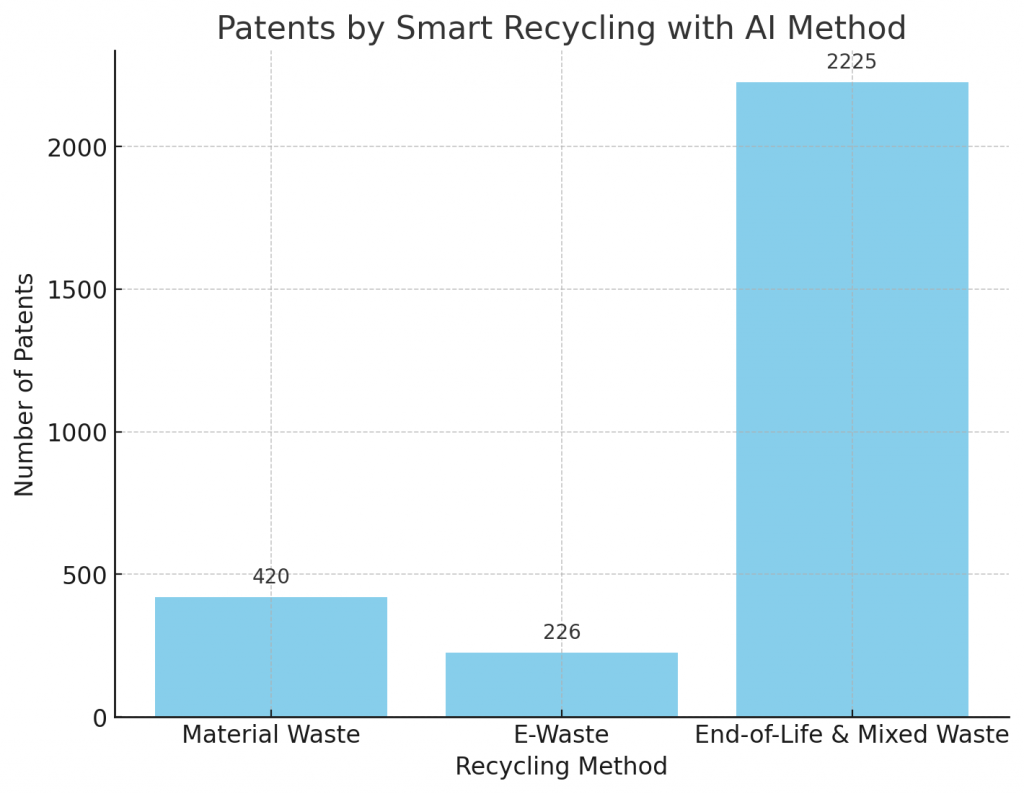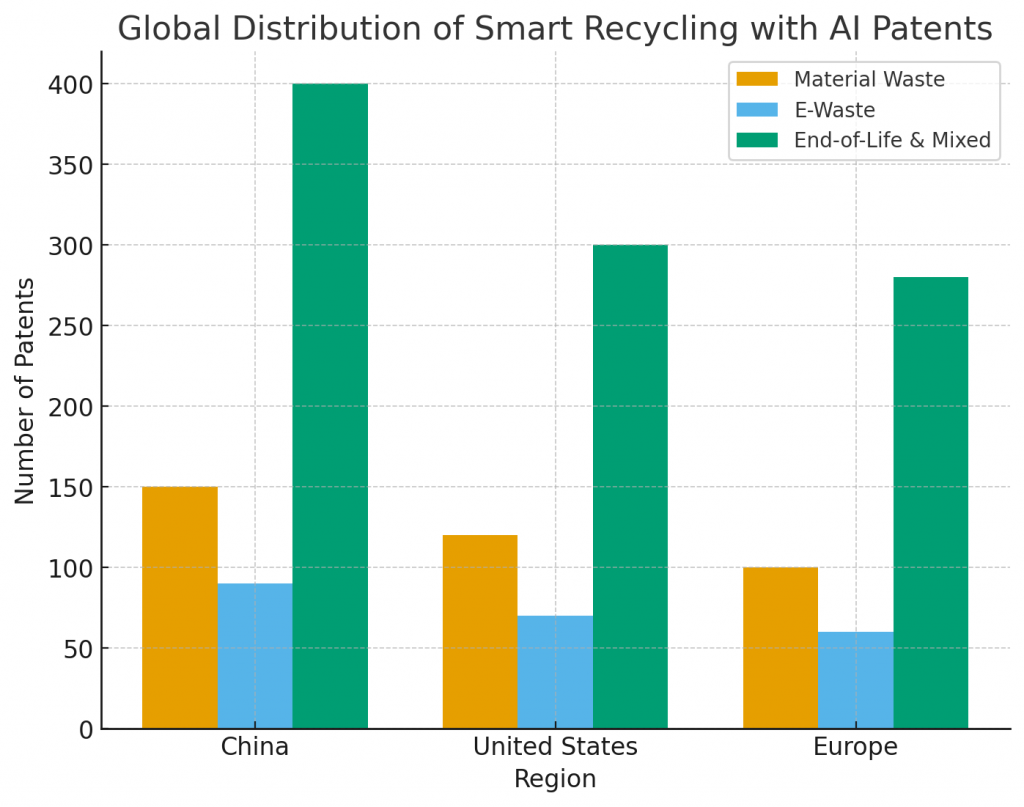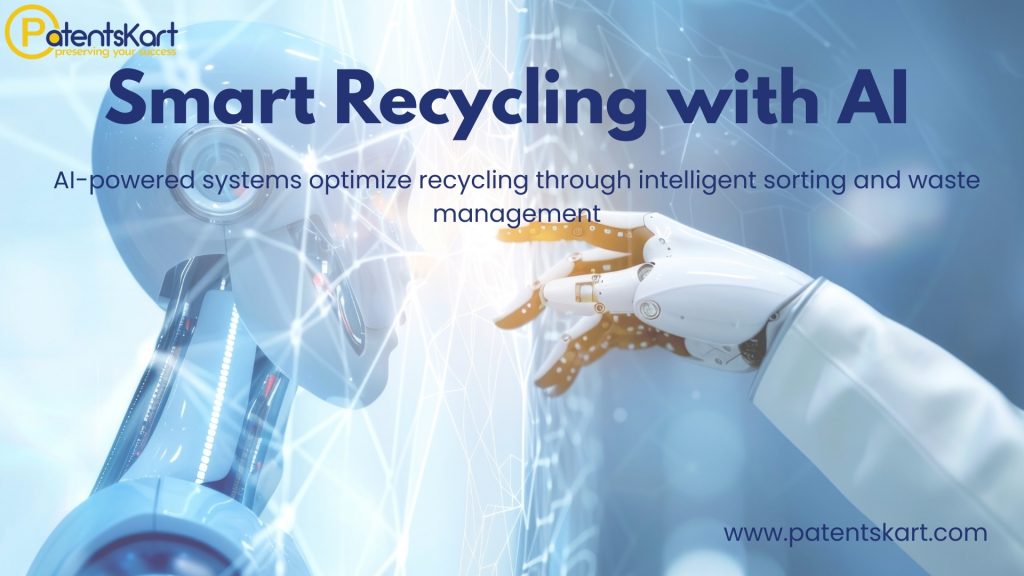What is Smart Recycling with AI and Why Does it Matter?
Waste management has long been a global challenge. Landfills are overflowing, e-waste is mounting, and valuable resources are being lost. Smart Recycling with AI is transforming how the world approaches these issues. By combining artificial intelligence, machine learning, and robotics, it delivers cleaner recycling streams, higher efficiency, and supports the shift to a circular economy.
The growing need for sustainable practices and stricter regulations makes this technology more relevant than ever. From cities to corporations, everyone is exploring Smart Recycling with AI as a way to reduce costs, meet ESG goals, and recover valuable materials.
How Does Smart Recycling with AI Work in Real Life?

At its core, it leverages sensors, computer vision, and predictive analytics to identify, classify, and sort waste.
- AI Vision Systems detect plastics, metals, paper, and glass with remarkable accuracy.
- Robotic arms powered by AI pick and separate items on conveyor belts.
- Smart bins provide real-time feedback, guiding citizens to sort correctly.
- Predictive analytics forecasts collection needs, optimizing routes for waste trucks.
In practice, this means fewer contaminated recycling streams, reduced landfill dependency, and safer handling of hazardous waste like batteries and electronics.
Which Industries Benefit Most from Smart Recycling with AI?
The applications extend far beyond traditional waste facilities. Different industries are actively deploying these solutions:
- Municipal Waste Management: Cities deploy smart bins, automated collection, and AI sorting to improve recycling rates.
- E-Waste Recycling: Specialized robots safely disassemble electronics and recover rare-earth metals.
- Textile Industry: AI identifies fabric blends, enabling recycling of materials once considered unrecyclable.
- Construction and Demolition: AI robots sort rubble, concrete, and steel for reuse in new projects.
- Consumer Goods & Packaging: Brands use AI insights to redesign products for recyclability.
What Companies Are Leading in Smart Recycling with AI?
Several global leaders are shaping the future of Smart Recycling with AI. These companies are deploying large-scale solutions and setting benchmarks:
- TOMRA Systems (Norway): Known for sensor-based sorting and AI-driven facilities.
- AMP Robotics (USA): Pioneer in AI-powered recycling robots, scaling globally.
- Greyparrot (UK): Specializes in computer vision waste analytics.
- ZenRobotics (Finland): Expert in robotic sorting of construction and demolition waste.
- Redwood Materials (USA): Focused on AI-enabled battery recycling.
- Recycleye (UK): Robotics and AI solutions for material recovery facilities.
What Role Do Patents Play in Smart Recycling with AI Innovation?
Patents are at the heart of innovation in Smart Recycling with AI. They highlight where technology is heading and who is leading.
- Material Waste Recycling: TRL 8, with over 420 patents filed.
- E-Waste Recycling: TRL 8, with more than 220 patents worldwide.
- End-of-Life & Mixed Waste: TRL 9, showing the highest maturity with over 2200 patents.
Patent leaders include BASF, Dow, IBM, Fraunhofer, Procter & Gamble, and AMP Robotics. These filings reveal a competitive race to develop smarter sensors, more accurate AI models, and robotic disassembly systems.
By analyzing patents, organizations can understand market readiness, identify partners, and avoid infringement risks. In essence, patents guide both investors and innovators in navigating the future of Smart Recycling with AI.
What is the Global Outlook for Smart Recycling with AI?

Patent data shows that China, the US, and Europe dominate filings, reflecting strong regional innovation.
- Short-term (1–5 years): Municipal adoption of AI sorting, smart bins, and early-stage e-waste robots.
- Medium-term (5–10 years): AI integrated into smart cities, large-scale industrial facilities, and circular economy platforms.
- Long-term (10+ years): Fully autonomous recycling networks and AI-driven product lifecycle design.
What Are the Challenges in Adopting Smart Recycling with AI?
While the opportunities are vast, the path to adoption of Smart Recycling with AI comes with challenges:
- High Initial Investment: AI systems, robotics, and sensors require significant upfront capital.
- Maintenance & Calibration: Dusty environments in recycling facilities can disrupt sensors.
- Data Standardization: Waste streams vary globally, complicating AI training.
- Workforce Training: Staff must adapt to operating AI-driven equipment.
- Policy Gaps: Not all regions have regulatory frameworks encouraging AI adoption.
Despite these hurdles, the long-term savings, improved recovery rates, and compliance benefits outweigh short-term costs.
How Does Smart Recycling with AI Enable the Circular Economy?
The circular economy thrives on the principle of keeping resources in use. Smart Recycling with AI is a cornerstone in this shift.
- Material Traceability: AI systems track material lifecycles, enabling reuse.
- Product Redesign: Insights feed back to manufacturers to design recyclable products.
- Reverse Logistics: AI predicts product returns and recycling needs.
- Sustainability Reporting: Automated compliance supports ESG and zero-waste goals.
How PatentsKart Can Help with Smart Recycling with AI Innovation
PatentsKart supports innovators, companies, and investors exploring Smart Recycling with AI.
- Patent Landscape Analysis: Identify leaders, competitors, and emerging technologies.
- Freedom-to-Operate (FTO): Ensure safe entry into markets without legal risks.
- Competitive Intelligence: Track startups, corporate filings, and consortium activity.
- Technology Roadmapping: Assess TRL levels and predict commercialization timelines.
- Global Strategy: Leverage patent data for cross-border expansion and partnerships.
With expert insights and actionable intelligence, PatentsKart empowers clients to stay ahead in the evolving world of Smart Recycling with AI.
Conclusion
Smart Recycling with AI is more than a trend — it’s a global necessity. With industries, governments, and startups all investing in these technologies, the future of waste management is smarter, safer, and circular.
From robotic disassembly to AI-powered smart bins, the innovations are reshaping how resources are recovered. Patents and TRL data confirm that this field is maturing rapidly, making now the right time to invest, adopt, and innovate.
For organizations navigating this space, partnering with experts like PatentsKart ensures informed decisions, risk management, and long-term success.
FAQs
1. What is Smart Recycling with AI in simple terms?
It refers to using artificial intelligence, computer vision, and robotics to sort, classify, and manage waste more efficiently than manual methods.
2. How does Smart Recycling with AI help reduce landfill waste?
By improving sorting accuracy and reducing contamination, AI ensures more materials are recycled instead of being sent to landfills.
3. Which companies are leading Smart Recycling with AI globally?
Leaders include TOMRA, AMP Robotics, Greyparrot, ZenRobotics, and Redwood Materials, along with several innovative startups.
4. What challenges exist in implementing Smart Recycling with AI?
High costs, data standardization issues, sensor maintenance, and lack of supportive regulations are common barriers.
5. How can PatentsKart help businesses in Smart Recycling with AI?
PatentsKart provides patent intelligence, FTO analysis, and technology roadmaps to guide businesses in adopting AI-driven recycling solutions safely and strategically.







